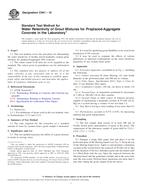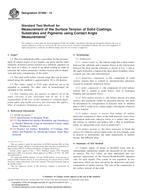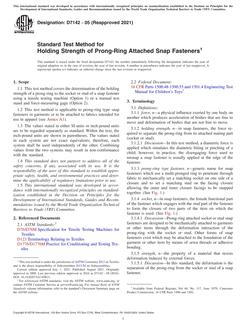1.1 This test method covers a test that can be used to compare the cavitation erosion resistance of solid materials. A submerged cavitating jet, issuing from a nozzle, impinges on a test specimen placed in its path so that cavities collapse on it, thereby causing erosion. The test is carried out under specified conditions in a specified liquid, usually water. This test method can also be used to compare the cavitation erosion capability of various liquids.
1.2 This test method specifies the nozzle and nozzle holder shape and size, the specimen size and its method of mounting, and the minimum test chamber size. Procedures are described for selecting the standoff distance and one of several standard test conditions. Deviation from some of these conditions is permitted where appropriate and if properly documented. Guidance is given on setting up a suitable apparatus, test and reporting procedures, and the precautions to be taken. Standard reference materials are specified; these must be used to verify the operation of the facility and to define the normalized erosion resistance of other materials.
1.3 Two types of tests are encompassed, one using test liquids which can be run to waste, for example, tap water, and the other using liquids which must be recirculated, for example, reagent water or various oils. Slightly different test circuits are required for each type.
1.4 This test method provides an alternative to Test Method G 32. In that method, cavitation is induced by vibrating a submerged specimen at high frequency (20 kHz) with a specified amplitude. In the present method, cavitation is generated in a flowing system so that both the jet velocity and the downstream pressure (which causes the bubble collapse) can be varied independently.
1.5 The values stated in SI units are to be regarded as the standard. The values given in parentheses are for information only.
This standard does not purport to address all of the safety concerns, if any, associated with its use. It is the responsibility of the user of this standard to establish appropriate safety and health practices and determine the applicability of regulatory limitations prior to use.
Product Details
- Published:
- 12/01/2006
- Number of Pages:
- 14
- File Size:
- 1 file , 210 KB


